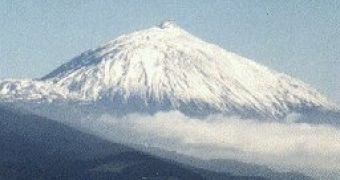1. Canary Islands are just the peak of mountain forming submarine volcanoes located in the mid-ridge of the Atlantic ocean. They emerged from the sea 20 million years ago. In some places, the lava is still hot and at 20 cm (8 in) underground, the earth has a temperature of 140o C.
2. The indigenous people of the Canary Islands were called Guanches. They were still at the Neolithic (Stone Age) state when Spanish started to colonize the archipelago during the 15th century.
3. In the island of La Gomera, an ancient tradition kept by local shepherds is that of the whistled speech. The silbo speech consists in emitting sounds mimicking syllables used in normal speech. Whistlers introduce two fingers in their mouths to emit sounds in varied tones and scoop their hands to the mouth so that the sound can be herd 3 km (1.9 mi) away. By the '60s, the silbo almost disappeared but now even a Silbo Day is celebrated yearly. Still, this speech is limited: you cannot express too many things with it.
4. Spain's highest point (mountain) is not found on the mainland, but in the Canary Archipelago: the peak named Teide, which has an altitude of 3,718 m (12,198 ft).
5. The Canary bird (Serinus canaria) takes its name from the Canary Islands. The bird is native to Azores, the Canary Islands, and Madeira. In fact, the name of Canary Islands comes from the Latin "canariae insulae" ("islands of dogs"), as Guanches used to keep a large breed of dogs.
6. Dragon trees (Dracaena) are common in the Canary Islands. They are called like this because their bark secretes a red latex in other times believed to be dragon blood.
7. Milk tree or sweet tabaiba (Euphorbia balsamifera) grows in Canary Islands and north Africa. This 3 m (10 feet) tall shrub is from the spurge genus and like all spurges it secrets a milky latex, but, unlike other spurges, the milk is not toxic, being sweet and harmless. Despite the name of the shrub, in fact its milk has no alimentary uses but medicinal ones. The tabaiba latex was chewed for strengthening the teeth and as antalgic treatment of acute dental pulpitis. This milk is also used against calluses, warts or moles, being very effective.

 14 DAY TRIAL //
14 DAY TRIAL //